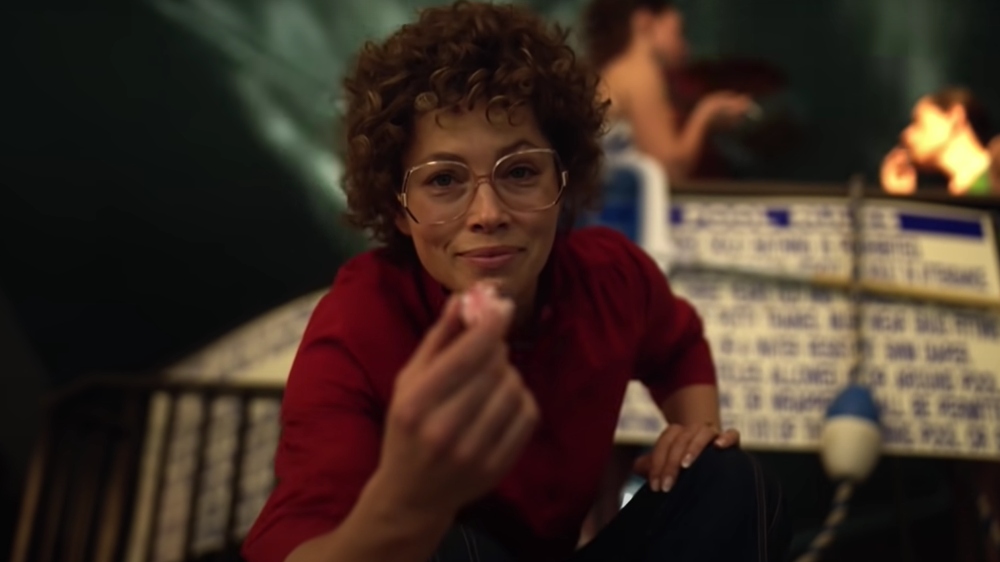
Hulu’s new true-crime series Candy stars Jessica Biel as Candy Montgomery, a church-going mother of two who is accused of murdering her friend, Betty Gore (Melanie Lynskey), with an axe.
Set in Wylie, Texas, in the 1980s, the series finds Candy — clad in bell bottoms, oversized glasses, and a perm — shuttling in her trusty station wagon between church, shopping malls, and volleyball games, though she feels stifled by suburban life, with its carpools and avocado-colored appliances, and she yearns for some kind of mischievous release. Her decision to act on that yearning indeed has deadly consequences.
The show does a good job of capturing the way that Candy sees the world, and a big part of that is the work of cinematographer Simon Dennis, BSC, who shot all five episodes. Dennis previously worked with Candy EP Michael Uppendahl, who directed Episodes 1 and 5, on FX’s Impeachment: American Crime Story, which led to this high-profile gig.
Dennis also worked alongside Candy directors Jennifer Getzinger, Ben Semanoff, and Tara Nicole Weyr. on the other three episodes, and he recently spoke with Below the Line via Zoom to discuss his involvement in the acclaimed Hulu series.
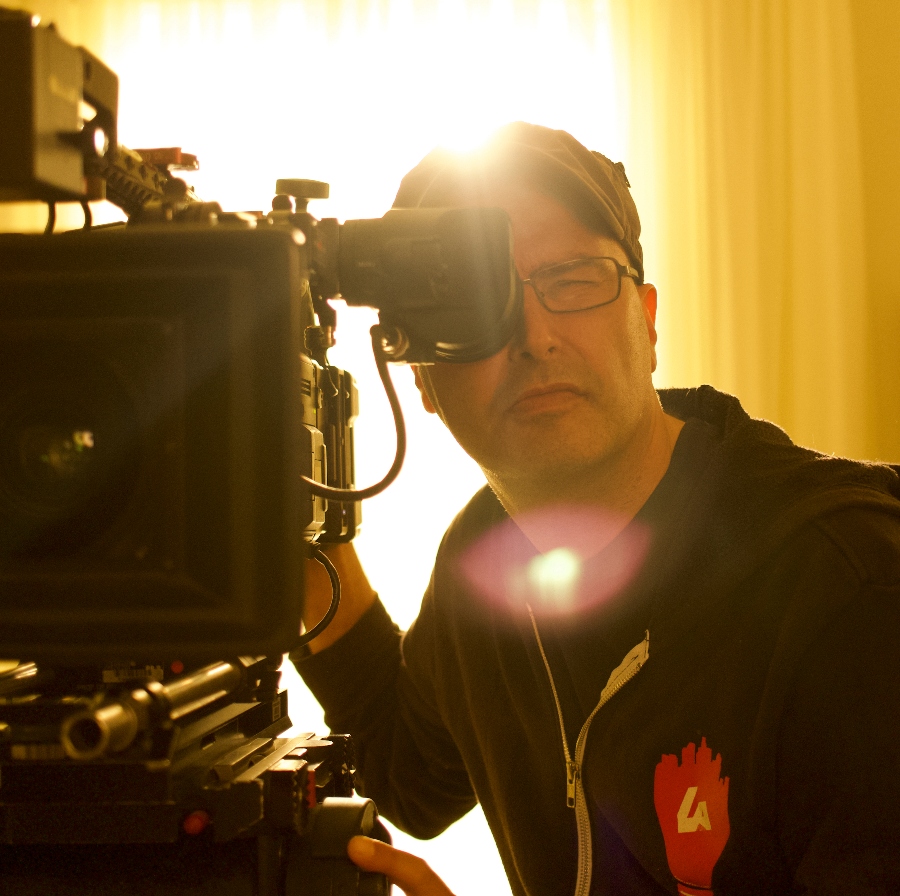
Below the Line: Is it unusual to shoot all the episodes of a series like this?
Simon Dennis: A bit, although I did all 10 episodes of Impeachment. I got into a kind of groove with that series. It’s a lot more downtime in the evenings, preparing. But I would sooner “own” a show than alternate with another DP, to be honest.
BTL: What did creators Nick Antosca and Robin Veith want from you as a cinematographer?
Dennis: That’s a tricky question. I worked with Mike Uppendahl on Impeachment, I felt comfortable with him, and I liked his work methods. And I love true crime. It’s a genre I would happily do for the rest of my life.
BTL: I ask because I found the visuals very representational. There aren’t a lot of flourishes or camera movements. You’re in close on the characters.
Dennis: In early conversations with Mike, I said it felt sort of like a Texas Fargo. There was a funny bone aspect to the story. After seeing the concept art, the 1980s stylings and costumes, I had this bizarre reference to Napoleon Dynamite. I loved the portrait aspect of that movie, the boxy look. We tried to push for a 1.33 aspect ratio with the studio. They were honest, they said they weren’t quite comfortable with that.
Then we wanted 1.66. We were trying to make the framing device for the story as boxy as we could. For our 1.66 pitch, I thought of The Virgin Suicides. Mike was like, ‘Well, we need to go there with something bankable.’ He found out that Toy Story was shot 1.66. When the studio heard that, they immediately approved. They were like, ‘If Toy Story earned a billion dollars…’
So, yes, we didn’t really want to do much camera movement at all. If we did move the camera, it would be in a kind of linear fashion, although there is a bit of handheld in there. I totally appreciate that you’ve said that because it was our approach to focus more on the camera framing than the camera movement.
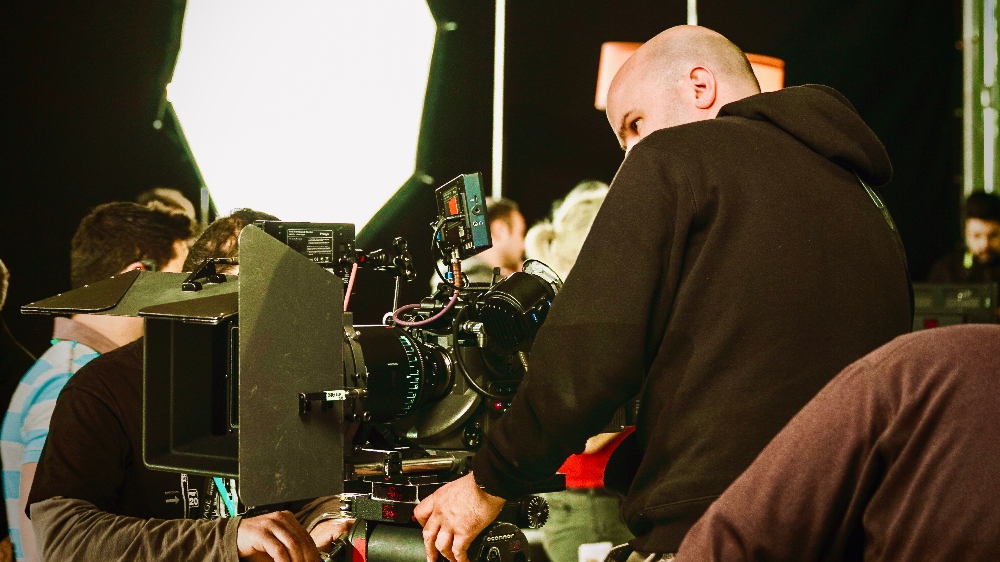
BTL: What was your camera package?
Dennis: We used the Sony Venice, which I’ve used for, like, the last three shows. It’s an absolutely beautiful camera because it has such latitude. We used Panaspeed lenses that Dan Sasaki at Panavision detuned for us. Detuning was a large part of the aesthetic, trying to mirror that period.
The Venice has amazing color science to it. My DIT and I do live color on the set, so we were able to heighten the color schemes a bit.
BTL: You had a DIT on set for the entire show?
Dennis: Yes, Spencer Shwetz, he’s an incredible brain and an all-around great guy. He’s got a mobile DIT station with a 55-inch OLED monitor. So when we’re watching the show on set, we’re seeing it calibrated to what you guys see at home. Everything is graded live, which makes it a lot easier in post. The actual final online grade was really easy, because maybe 80 percent was already in the camera.
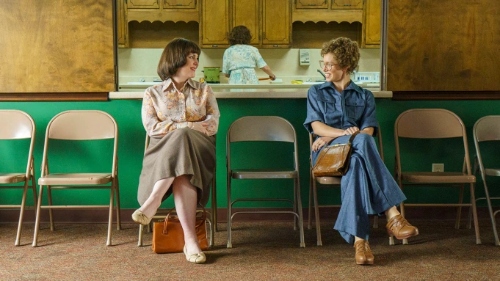
BTL: This looks like a single-camera true-crime documentary.
Dennis: Believe it or not, we had three cameras on this show. My background was single camera, then I was coaxed into using two. On Ryan Murphy‘s shows, we use three cameras. I’ve spent four years working for Ryan, and it taught me a lot about using three cameras to your advantage.
My tactic is advancing. If I’ve got two cameras on a piece of action, I advance the third camera to the other side of the set or a top rig or to the next room. For something like Betty’s house, we would plan like live theater, [and] let the action play out throughout the entire house knowing that we had everything covered. It helps the actor’s process and flow, [and] helps build confidence in a scene.
BTL: Are you operating?
Dennis: I haven’t operated in five years, and I miss it dearly. I worked very closely with my operators. We had three on this show, Bill Saxelby, Cristian Trova, and Kate Roberson — Atlanta locals who were new to me.
I spent a lot of time briefing them on the principles, being very strict about camera movement and in particular framing. They completely understood the show, but camera operators have muscle memories, so they always kind of slightly divert back to what they did in their last show. I was very adamant about portrait-style photography, very little camera movement, spending a lot more time building the frame than moving the frame.

BTL: Let’s face it, it’s not easy to make suburban Texas in the disco era look good.
Dennis: I was born in 1972. I remember my dad in those flared pants and large ties. I love that period, it’s kind of kitsch. Obviously, it’s heightened here. That’s why I come back to Napoleon Dynamite. I can also relate back to Mike Leigh‘s movies. All of his characters live in a heightened reality.
Robert Blackman, the costume designer, really did a lot of work with Jamie Walker McCall, the production designer, on the color schemes. They pulled out the yellows, the harvest golds, the avocado greens. A lot of reds in there, too.
I worked with Jamie on Impeachment. I love her method, she’s incredibly conscious in the way she puts sets together. Lighting concepts, where to put practicals, but also color schemes. I love light color theory. You may have noticed quite a lot of sodium-vapor lighting. It’s closer to the red spectrum, closer towards something that was a little more blood-based.
Here’s the challenge. We had a show that was shooting in the fall of Atlanta that was faking summer in Texas. Right off the bat that gave us limited daylight shooting hours. In the end, there was a lot of CG, tree and sky replacements, cleanups. We live in that modern world now. The show in general just needed a kind of ironing out, as it were, on the background.
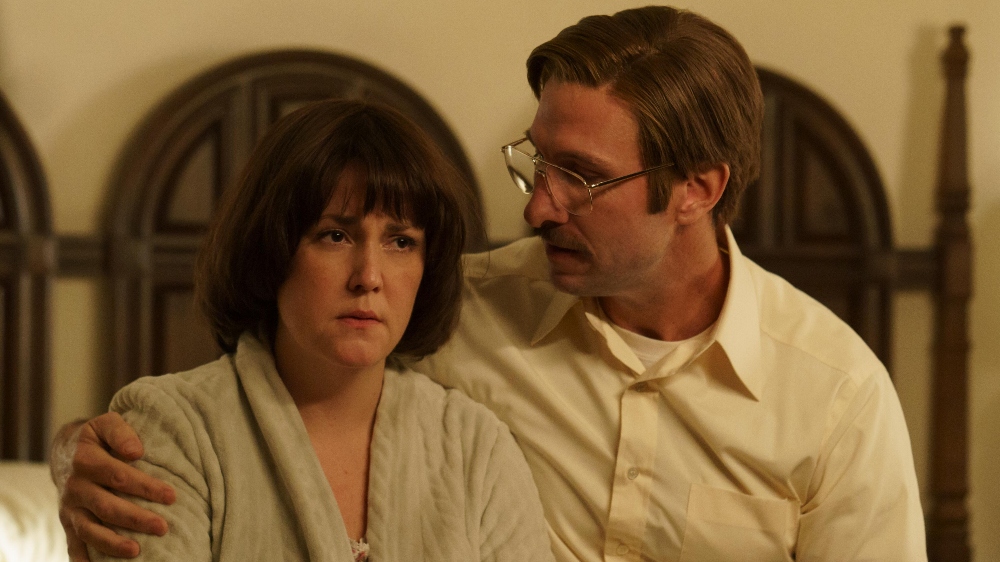
BTL: How much did you shoot in the studio?
Dennis: We had sound stages for Betty’s house and parts of Candy’s house. The challenge for Candy’s house on location is that it’s like a giant fishbowl, and it represented maybe a third of the show. I’d say 50 percent of the show was staged, 50 percent on location.
BTL: How do you collaborate with Mike Uppendahl and the other directors when it comes to composition and blocking?
Dennis: Mike is an actors’ director. Once we understood the theme and tone of the show, he’s happy to let me play what is traditionally the director of photography. I would be happy to offer up frames. We would spend more time talking about the scene, then shoot it quickly.
We talked a great deal about the courtroom stuff. Courtrooms are so challenging because the imagery is sort of classic in TV drama. It was tough to get a balance within the subjectivity and objectivity of the characters. We were trying to play fair with both Betty and Candy.
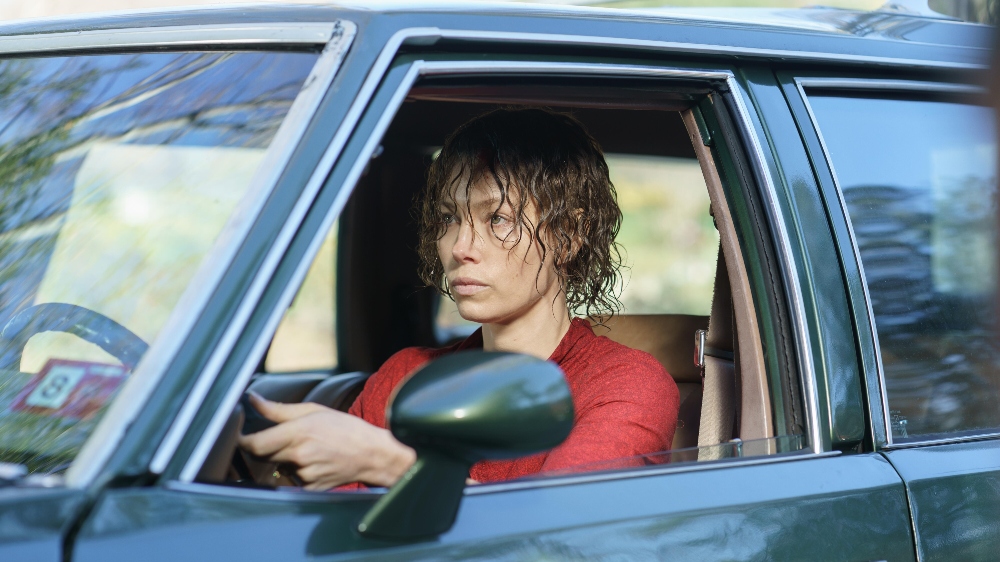
BTL: Plus, in courtroom scenes, the characters are always in the same place.
Dennis: You have to make your decisions early on. Mike and I had a lot of back-and-forth about where we would place Betty. Did we want her behind the defense? On the edge? Because this is going to live for upwards of an hour of screen time. You have to be very cautious about how you set up the courtroom.
For each character who took the stand, we tried to play fair with both the prosecution and the defense. It’s tough because every single angle feels like it’s going to be either an objective or a subjective viewpoint, take some kind of side.
Some angles we played with the wings of the set. But with Candy’s testimony, we kept her right in the middle and let it play out.
BTL: How did you balance the long stretches of dialogue during the trial? Do you shoot scenes straight through?
Dennis: What Mike likes to do is start in and work out. Which I think is brilliant because you’re always getting what is ultimately the heart and soul, the drama and intense emotion, of the scene first, because you back out and get inserts, reactions, that kind of stuff.
I come from an editing background. I always feel you should start at the heart of a scene because that’s where the focus is going to be, that’s where the edits are going to be.
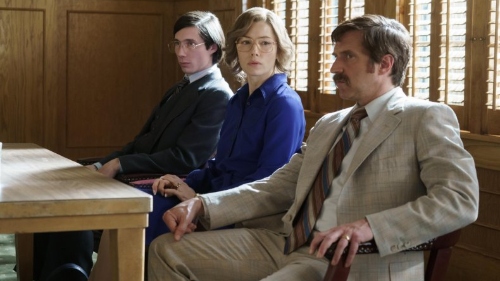
BTL: Can you talk about working with Jessica Biel? I’m thinking especially of these dissociative moments when the sound around her drops out.
Dennis: Jessica’s an incredible human being. She’s a team player who loves to get involved. We had a great relationship. After a while you get into a groove where it’s a little more hands off, fewer discussions. It’s a bond, a sense of trust. I felt very comfortable working with her. She was amazing with the whole crew.
I’m a massive fan of psychological zooms, the moment in a scene where it becomes purely subjective, the sound falls away, you do a gentle zoom into the character. You can tap into someone’s brain without earmarking or sign-posting exactly what they’re feeling. You get a sense of it, but also a sense of tension.
BTL: We were talking earlier about how working on digital differs from working on film.
Dennis: My original background is in film. What I find fascinating about digital is the effort people take to make it look like film. There’s also a discipline to film. When you’ve got six rolls of film to shoot that day, everyone is really prepared. Whereas digital leaves people off the hook a little bit. There is a danger with digital to kind of ease up on the pressure, because you can shoot hours of footage a day. If you’ve only got six rolls, you can be damn sure that everyone’s going to be on their A-game.
Candy is now streaming in its entirety on Hulu.





